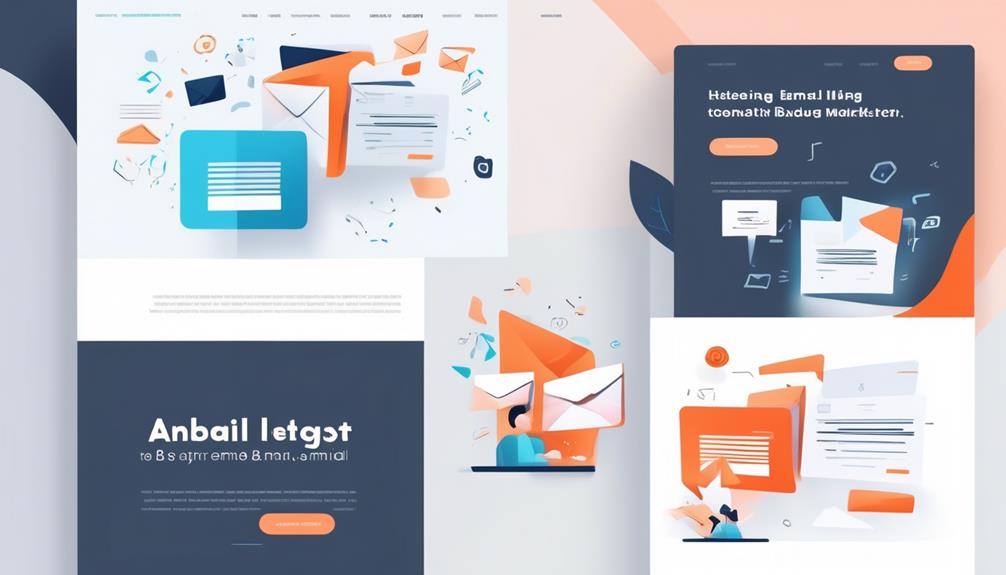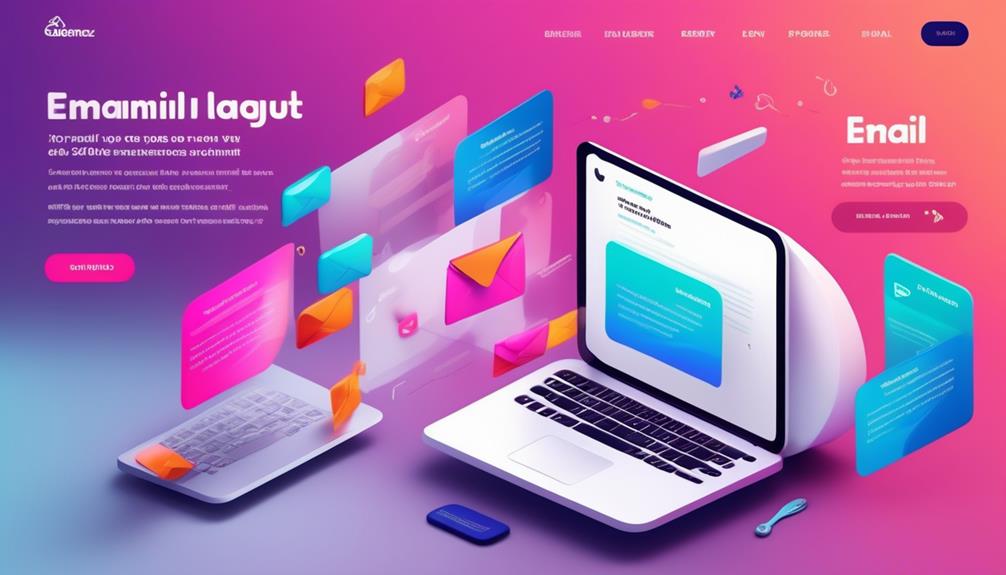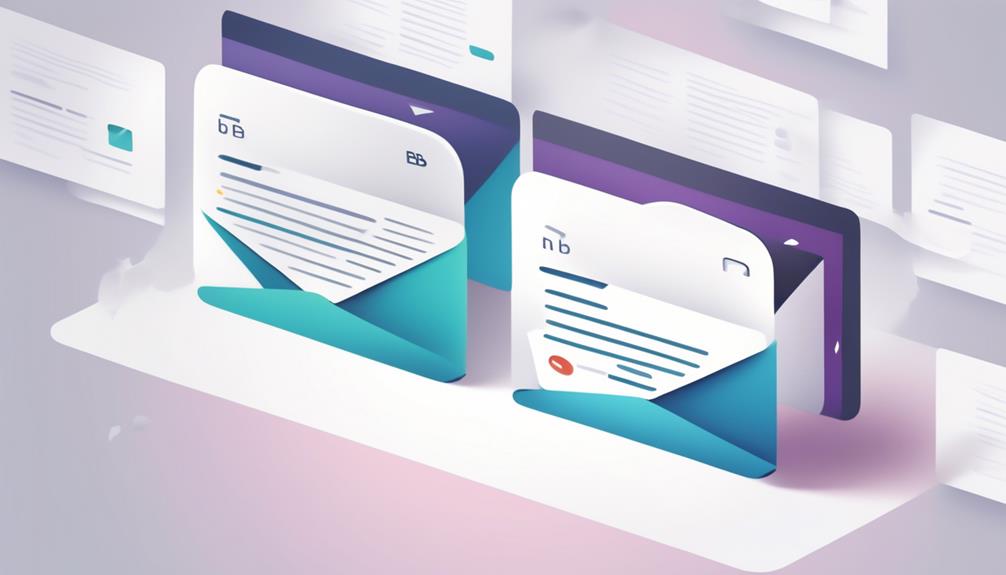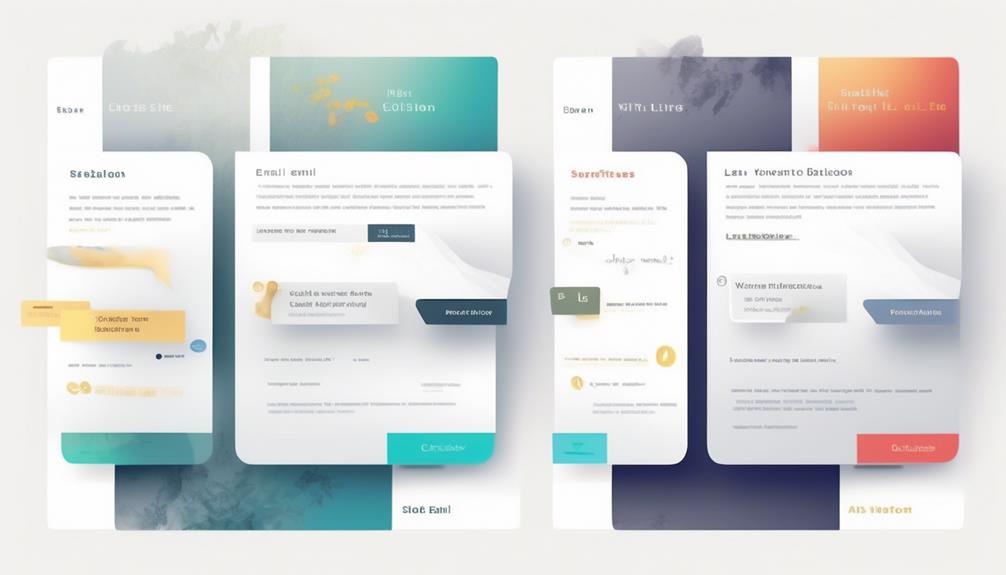Email marketing continues to be considered a crucial strategy for businesses, providing an average ROI of $42 for every dollar spent.
But how do we ensure that our emails are not just landing in inboxes, but actually engaging our audience? Mastering the art of email A/B testing is key to unlocking the potential of our email campaigns.
It's not just about randomly sending out different versions of an email and hoping for the best; it's about strategically testing different variables to understand what truly resonates with our subscribers.
So, how can we ensure that our A/B testing is effective and yields valuable insights?
Key Takeaways
- Email A/B testing is crucial for data-driven insights and informed decisions in email marketing optimization.
- Prioritize variables that significantly impact email metrics such as open rates, click-through rates, and conversions.
- Segment your audience effectively to understand their engagement with different content variations.
- Analyze A/B test results meticulously and iterate based on data-driven decision making to continuously improve email marketing strategies.
Understanding Email A/B Testing
We have found that understanding email A/B testing is essential for leveraging data-driven insights and making informed decisions in email marketing optimization. Mastering email A/B testing involves comprehending the nuances of testing different variations to improve email performance. By segmenting your audience and accurately measuring the impact of changes, you can effectively optimize conversion rates.
Email A/B testing best practices encompass testing various elements such as subject lines, body copy, calls to action, images, and personalization. This understanding enables marketers to pinpoint which elements resonate best with their audience, leading to more impactful communication.
Moreover, it's crucial to recognize the significance of testing one element at a time while keeping other variables constant. This approach allows for a clear understanding of the specific impact of each change, facilitating informed decision-making in email optimization efforts.
In essence, understanding email A/B testing is the cornerstone of mastering email marketing. It empowers marketers to make data-driven decisions, continually improve email performance, and ultimately enhance the overall effectiveness of their email campaigns.
Choosing the Right Variables

Transitioning from the foundational understanding of email A/B testing, it's crucial to strategically select the variables that will yield the most impactful insights into audience engagement and behavior.
- Key Elements: When choosing variables for A/B testing, focus on key elements that are known to significantly impact email metrics such as open rates, click-through rates, and conversions.
Consider variables like subject lines, email variations, and personalized subject lines, as these have been shown to have a direct impact on audience engagement and behavior.
- Statistical Significance: Prioritize variables that are likely to have a significant impact on email performance. It's important to test variables one at a time to accurately measure their individual impact and ensure statistical significance in the results.
Implementing A/B Testing Successfully
Implementing A/B testing successfully requires a methodical approach to experiment design and rigorous analysis of the resulting data to derive meaningful insights for email optimization. When A/B testing your emails, it's crucial to segment your audience effectively to understand how different groups engage with your content. By isolating variables and testing one element at a time, you can generate higher open rates and click-through rates. This approach allows for a focused analysis of the impact of specific changes on your audience's behavior.
To improve email marketing strategies through A/B testing, it's essential to analyze the results meticulously. Look beyond just open rates and click-through rates; consider metrics such as conversion rates and revenue generated from the email campaign. This comprehensive analysis will provide a holistic view of the effectiveness of the tested elements.
Successful implementation of A/B testing also involves utilizing the insights gained to inform future experiments. By continuously refining your email marketing strategies based on data-driven decisions, you can optimize engagement and drive better results over time. A methodical and analytical approach to A/B testing is key to unlocking the full potential of your email campaigns.
Analyzing and Iterating for Improvement
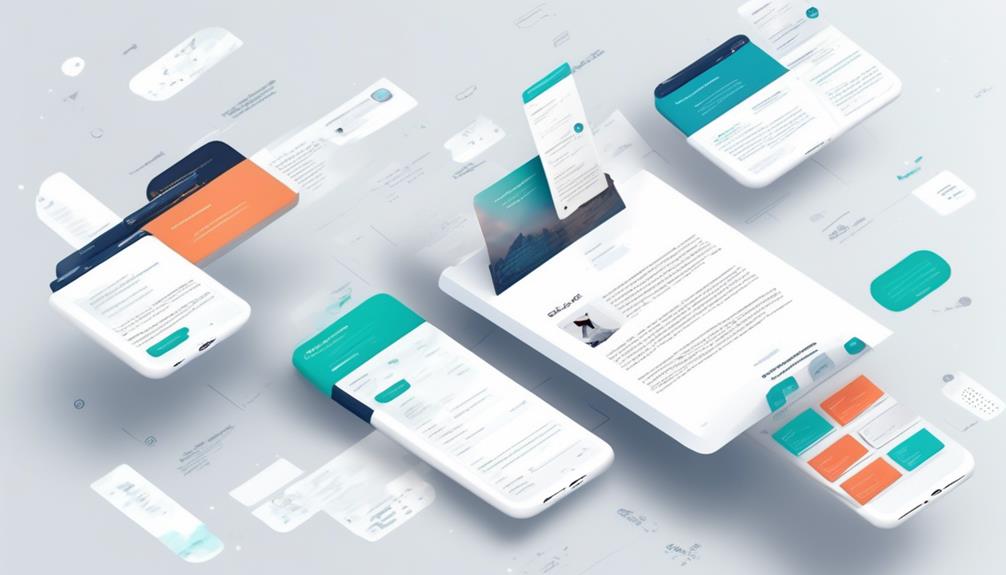
To drive continuous improvement in email marketing strategies, we must systematically analyze A/B test results and iterate on email variations based on data-driven decision making. When analyzing A/B test results, we focus on open rates, click-through rates, and conversion rates to identify which email version resonates more with our audience. Through this analysis, we gain insights into the effectiveness of different subject lines, content formats, and calls to action. Additionally, we scrutinize results across different audience segments to understand how variations perform with specific subsets of our audience.
Iterating based on data-driven decision making involves making informed adjustments to email content and design. We experiment with different elements such as subject lines, visuals, and messaging, leveraging the insights gleaned from A/B testing. By continually optimizing email variations, we ensure that our campaigns evolve to better resonate with our audience over time. This iterative approach allows us to refine our email marketing strategies, drive higher engagement, and ultimately achieve improved performance.
Are the Key Tips for A/B Testing in Email Marketing Applicable to Testing Email Subject Lines?
When it comes to email marketing, the key email subject line testing tips can definitely be applied to A/B testing. By experimenting with different subject lines, you can gauge which ones resonate best with your audience and lead to higher open rates and engagement.
Frequently Asked Questions
How to Do Ab Testing for Emails?
We conduct A/B testing for emails by analyzing audience engagement through variations in:
- Subject lines
- Body copy
- Calls to action
- Images
We use segmentation, sending frequency, from name, and HTML vs. plain text as test factors. Essential tools like Email Service Providers and CRM tools aid in successful testing.
What Is the First Step in Performing an a B Test in Email Marketing?
The first step in performing an A/B test in email marketing is identifying the specific email element or variable to test, like subject lines or call-to-action buttons.
Once we clearly define the objective and choose audience segments, we create multiple email variations.
Then, we send them to selected audience segments for analysis.
This method ensures we obtain statistically significant data and meaningful results to optimize our email campaigns.
Which Elements of the E Mail Would You Consider Including in Your a B Testing?
We would consider including the following elements in our email A/B testing:
- Subject lines
- Body copy
- Calls to action
- Images
- Personalization elements
By experimenting with variations in:
- Length
- Tone
- Personalization
- Emoji usage
- Storytelling techniques
- Testimonials
- Wording
- Placement
- Colors
- Styles
- Visuals
- Graphics
- Product images
- Human faces
- GIFs
- Dynamic content
- Personalized recommendations
- Subject lines
We aim to optimize our email marketing strategy for maximum engagement and conversion.
What Is the Main Purpose of a B Email Testing?
The main purpose of A/B email testing is to compare two versions of an email to determine which one yields higher engagement and conversion rates.
By conducting these tests, we obtain valuable insights into audience preferences and behaviors, enabling us to make data-driven decisions in email optimization.
This process allows us to avoid making assumptions and instead rely on concrete evidence, ultimately driving better results over time.
Conclusion
In conclusion, mastering email A/B testing is crucial for optimizing marketing strategies.
By understanding the variables, implementing tests effectively, and analyzing data for improvement, we can achieve better results.
It's no coincidence that successful email campaigns rely on data-driven insights and continuous iteration.
With the right approach, email A/B testing can lead to significant improvements in open rates, click-through rates, and overall engagement with our audience.
